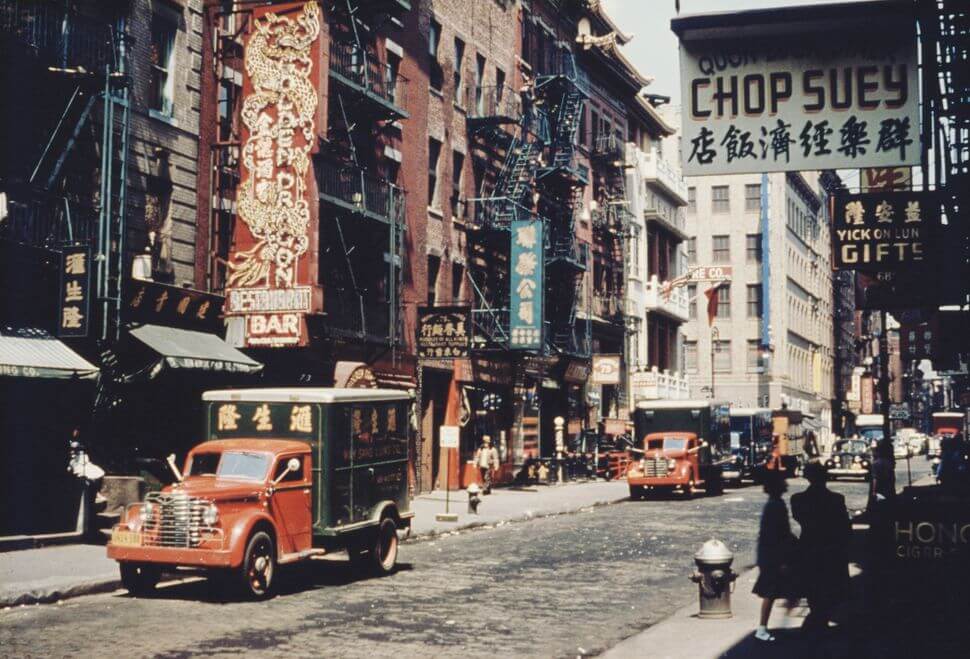How a swaggering Jewish kid from East London became (albeit briefly) Britain’s greatest rock star and poet
Marc Bolan is the subject of the documentary ‘Angelheaded Hipster”

Marc Bolan, circa 1975. Photo by Getty Images
A hard-hustling Jewish kid from East London who willed himself into becoming (for a time, at least) Britain’s biggest pop star and its best-selling poet, Marc Bolan cut a fascinating, charismatic and contradictory figure.
Equally comfortable strumming a cheap acoustic guitar cross-legged and strutting with a Les Paul across an arena stage, Bolan spouted lyrics that read like Edmund Spenser meets Eddie Cochran, even though driving the hot rods he sang about was as much of an impossibility for him as mounting the unicorns that likewise populated his songs. The T.Rex frontman’s androgynous, glitter-daubed appearance on Top of the Pops in March 1971 single-handedly kicked off the glam rock movement, but his self-possessed swagger and petulant snarl also deeply resonated with a generation of future punks.
Never content to sit still for long, Bolan flitted from folk to psychedelia to hard rock to glam to soul and disco with the same zeal as (and, in many cases, one step ahead of) longtime friend and rival David Bowie, though his outsized ego prevented him from finding the right collaborators for a convincing post-glam landing. But just as he was finally getting it together in 1977 to make a serious comeback, he died when the Mini driven by his girlfriend Gloria Jones ran off the road and slammed into a tree. Bolan was just a few weeks shy of his 30th birthday at the time.
Considering the tragic arc of his story, the giddy heights of “T.Rextacy” — when he sent 11 straight singles into the UK Top 10, including the chart-toppers “Hot Love,” “Get It On” (retilted “Bang a Gong” in the U.S.), “Telegram Sam” and “Metal Guru” — and the fact that his albums like Unicorn, Electric Warrior and The Slider have continued to influence a wide array of musicians over the ensuing half-century, Marc Bolan has been long overdue for a definitive documentary. AngelHeaded Hipster: The Songs of Marc Bolan & T. Rex, a long-gestating film project which arrives in U.S. theaters Aug. 8 (and will be released digitally Sept. 5), unfortunately isn’t it, but it is the first Marc Bolan/T.Rex documentary to take Bolan’s songwriting as seriously as his star power and personal style.
At the core of AngelHeaded Hipster: The Songs of Marc Bolan & T. Rex is the making of the Hal Willner-produced all-star tribute album of the same name, which was released in 2020 shortly after Willner’s death from COVID-19. Instead of taking a more traditional documentary approach with a chronological timeline interspersed with talking heads, director-writer Ethan Silverman (who also co-produced the film with longtime Who manager Bill Curbishley) uses footage from the album’s sessions as a jumping-off point for examining how Bolan fused influences ranging from Elvis Presley to J.R.R. Tolkien into songs that were both staggeringly unique and profoundly influential.
Several of the album’s participants, including The Edge from U2, Elton John, Nick Cave, Richard Barone, Beth Orton, Joan Jett and Devendra Banhart, testify in the film to the lasting brilliance of Bolan’s vision and/or his impact upon their own work. “As a composer, as a songwriter, he has never gotten his due,” Willner remarks at one point. “He’s gotten his due as a rocker with cool grooves — but you listen back to those songs, and they are deep!”
Cave, no slouch as a wordsmith himself, agrees, “I always thought he was a better lyric writer than, like, Bowie,” he says. “Marc Bolan to me kind of seemed to invent a kind of language with his songs that was perfected on [Electric Warrior] — a way of using words and images that I think is entirely unique.”
For the most part, however, the most perceptive comments in the film come from interviewees who aren’t actually on the AngelHeaded Hipster album: Ringo Starr — who directed the surreal 1972 T.Rex concert film Born to Boogie — praises Bolan’s instantly recognizable approach to rhythm guitar, and credits him with his inspiring his own solo hit “Back Off Boogaloo.” Def Leppard frontman Joe Elliott connects the phenomenon of T. Rextacy (and the rise of glam rock in general) to the rise in popularity of color TV, while also revealing that he once hand-copied every single line from Bolan’s poetry book The Warlock of Love into a school exercise book.
Billy Idol marvels at the “punk attitude” he witnessed Bolan employing to win over a hostile festival crowd in 1971, a memory which is later tied in nicely to Idol’s performance with first-generation UK punk band Generation X on Bolan’s 1977 TV variety series Marc. And film director and former Rolling Stone journalist Cameron Crowe vividly recalls interviewing Bolan during his 1973 tour of the US, when T.Rex was opening for Three Dog Night and Bowie was fully eclipsing Bolan’s star on both sides of the Atlantic.
Of course, you can’t tell Bolan’s tale without bringing up Bowie — so intertwined were their careers — and the Thin White Duke duly shows up here in various archival clips to praise and poke affectionate fun at his old friend. (His recollection of their initial meeting, as recounted during the filming of his VH1 Storytellers episode, is particularly hilarious.) Gloria Jones and her and Bolan’s son Rolan are also on hand to add insight and emotional resonance to the story; Jones’ memories of Bolan shedding tears over his fans’ rejection of his soul-oriented direction — and of him blissfully pogoing his way to the front of a Ramones gig — make it clear that, for all of his seemingly calculated career moves, Bolan was primarily motivated by his sheer love of music.
But ultimately, no one makes a better case for the singular radiance of Bolan than Bolan himself, and the archival concert and interview clips Silverman includes in AngelHeaded Hipster (several of which hail from Born to Boogie) are ultimately the best things about the documentary. Whether he’s describing his anthem “20th Century Boy” as “erection rock,” blatantly contradicting himself in conversation with various TV interviewers, or being disarmingly frank about his bisexuality (“I have checked everything out,” he proudly admits, before teasingly claiming that “David Bowie and I were going to get married at one time”), Bolan commands the viewer’s attention just as confidently as he does during his musical performances.
If anything, Bolan’s genius is further underlined by the unimpressive renderings of his material by the other artists in the film, most of which are either overly reverent or forgettably workmanlike, and don’t come anywhere near to capturing the fizzy impishness and playful eroticism that was his stock in trade. (Bowie’s fiery performance of “20th Century Boy,” filmed when he joined British band Placebo onstage at their 1999 show in New York City, runs rings around anything on the Willner-produced album.) The brief glimpse we get of young students singing a chorus of “Children of the Revolution” at the Marc Bolan School of Music and Film in Makeni, Sierra Leone — yes, it’s a real thing — feels fresher and far more subversive than anything delivered by the more famous names in AngelHeaded Hipster.
But even if AngelHeaded Hipster doesn’t offer the sort of deep dive that Bolan’s story still deserves, it’s nonetheless worth a look — both to be reminded of the broad scope of his influence and his wonderfully idiosyncratic approach to songwriting, and to savor the film’s dazzling glimpses of the much-missed “Electric Warrior” in both musical and conversational action.















